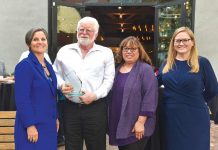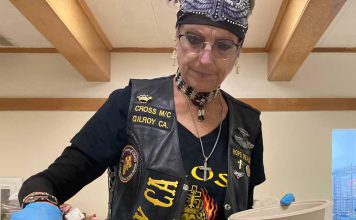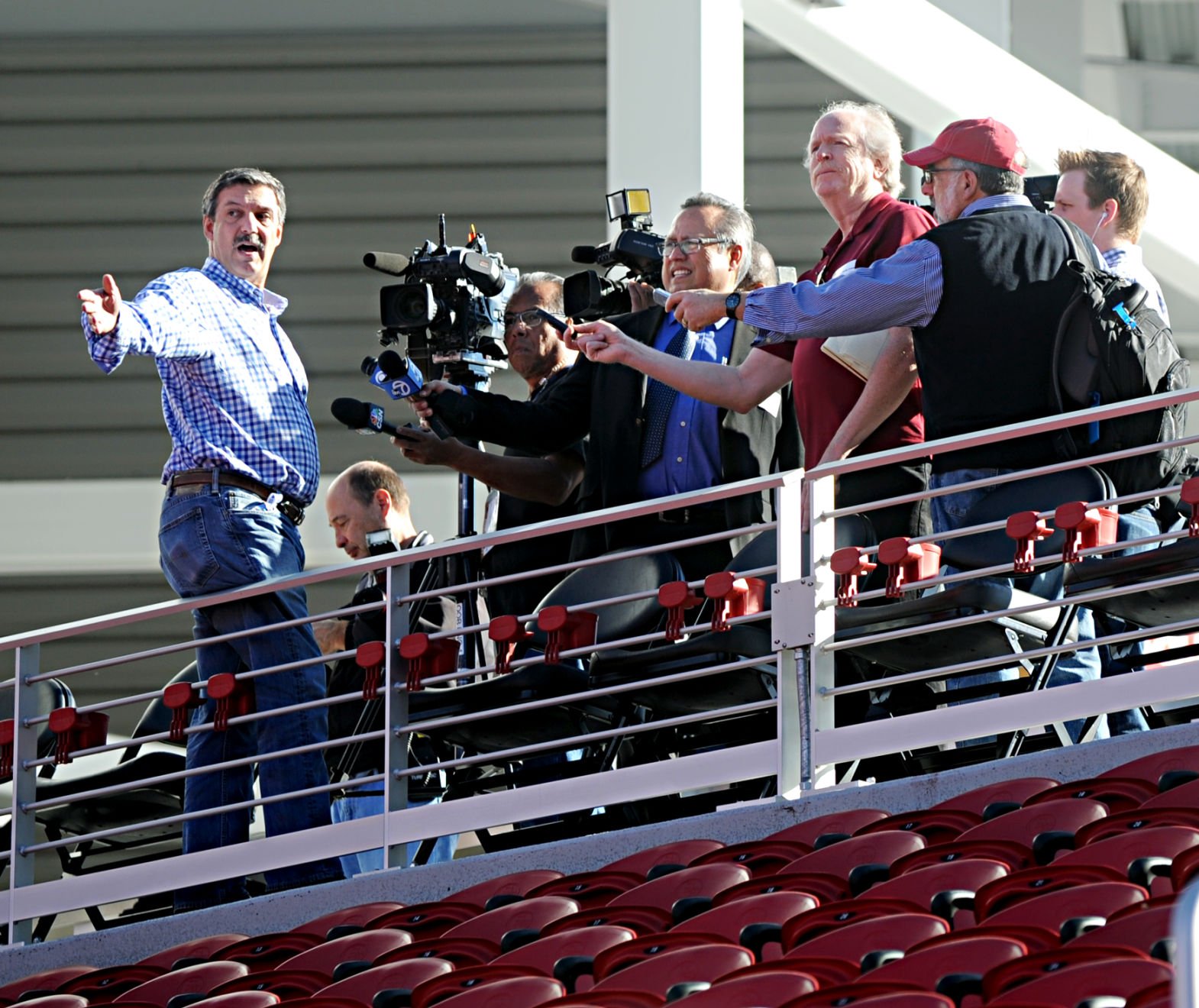South County residents are invited to a remarkable event being
held at the Gavilan College Library. A nationally recognized art
exhibit combined with presentations by speakers concerned with the
Jewish and Muslim faiths offers an unusual opportunity for local
residents to increase their understanding of the world around
them.
South County residents are invited to a remarkable event being held at the Gavilan College Library. A nationally recognized art exhibit combined with presentations by speakers concerned with the Jewish and Muslim faiths offers an unusual opportunity for local residents to increase their understanding of the world around them.
“Piece Process 3” is a traveling art exhibit featuring the work of a dozen artists, Israeli and Palestinian, Jewish and Arab, committed to exhibiting work which explores the Middle Eastern conflict and prospects for peace. This is the third exhibit, following ones held in Chicago in 2002 and Athens, Georgia, in 2004.
The library, 5055 Santa Teresa Blvd. in Gilroy, is open Monday through Thursday from 8am to 6pm, Friday from 8am to 2pm and closed weekends. Visitors will see a variety of art works on display: color prints, oil on canvas, sheer fabrics with ghostly images, mixed media, acrylics. All of them are thought-provoking, and many are quite memorable (like the Arab kaffiyeh head dress boasting two peace symbol buttons).
A series of seven Sunday afternoon forums, “The Art of Peace: Dialogues for Change,” is being held in the library, surrounded by these stunning images. Sponsors are Gavilan College, the South Valley Islamic Community and Congregation Emeth, South Valley’s Jewish Community. Each session is free to the public and begins at 4pm.
Last Sunday’s session featured a dialogue between Rabbi Yitzhak Miller and Imam Ilyas Anwar on the topic “Islam and Judaism: An Exploration of the Sacred Shared.” The evening started with the clergy telling a story as found in their respective scriptures: Abraham following God’s command to travel to a mountain and sacrifice his son. Although the plot of each story is similar, the audience soon noticed some significant differences between the accounts. For example, the Jewish Torah (and Christian Old Testament) feature a son named Isaac, while the Muslim Koran is about a son named Ishmael, who gives his approval to his own potential slaying.
Another particularly informative part of the discussion compared and contrasted the “Five Pillars of Islam” with the “Three-cornered Stool of Judaism.” There was a good deal of similarity between these two statements of the faiths’ essentials: they both prescribe prayers at scheduled times, practice fasting and value giving money to those in need, for example.
But differences exist too: for instance, Judaism allows more differences of belief about the nature of God among Jews and has a much broader view of what constitutes its holy scripture.
There was time at the end for questions from the audience, who all seemed intellectually engaged, respectful of the divergent opinions, and appreciative of the frequent humorous remarks from Rabbi Miller and Imam Anwar.
For people who have interest in the Middle East or these two great religions which sprang from there, it is not too late to participate in this informative program. Future dialogues are as follows:
Sept. 25 What Everyone Needs to Know about the Middle East for Successful Dialogue
Oct. 2 How 9-11 Impacts Jews, Muslims, and Everyone Else in the South Valley
Oct. 9 Keeping the Faith: Jews and Muslims in South Valley
Oct. 16 Models of Peacemaking Success
Oct. 23 Closing Reception and Plans for Future Collaborations
For more information, call Jan Bernstein Chargin, Gavilan College public information officer at (408) 848-2724.
Chuck Flagg teaches English at Mt. Madonna High School. Write to him at P.O. Box 22365, Gilroy, Calif. 95021.











